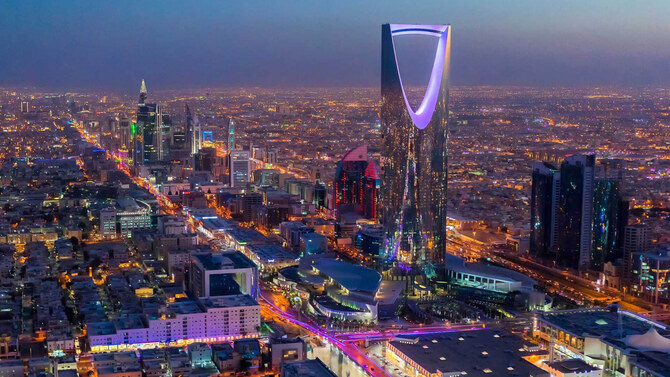A Big Win for Saudi Arabia’s Economy!
I’ve been following Saudi Arabia’s economic journey for a while now, and I’ve got to say, their latest milestone has me impressed! On April 26, 2025, the state news agency announced that Saudi Arabia’s non-oil exports hit an all-time high of 515 billion riyals—that’s $137.29 billion—in 2024. That’s a huge leap, up 13% from the previous year, and a staggering 113% increase since the launch of Vision 2030 back in 2016. As someone who’s always rooting for economic diversification, this feels like a big step forward for the kingdom, especially since they’ve been so tied to oil for decades. But how big of a deal is this really? Let’s break it down and see what this record means for Saudi Arabia’s financial future—and whether it’s as game-changing as it sounds.
Why This Record Matters
Saudi Arabia has long been the world’s oil giant, with petroleum accounting for about 87% of their budget revenues and 90% of export earnings. But relying so heavily on oil comes with risks—price swings, global demand shifts, and the push for renewable energy are all threats to their economy. That’s why Vision 2030, the kingdom’s plan to diversify away from oil, is such a big deal. The goal is to boost industries like tourism, manufacturing, and tech, and this $137 billion in non-oil exports shows they’re making real progress. Abdulrahman Althukair, CEO of the Saudi Export Development Authority, said it best: this jump is thanks to the kingdom’s “sustained efforts in economic diversification.” And I can see why—investing billions into infrastructure, sports, and tourism is starting to pay off.
How Non-Oil Exports Have Grown Over the Years
To put this achievement into perspective, I pulled together some numbers on Saudi Arabia’s non-oil exports over the years since Vision 2030 started. Take a look at this—it’s pretty eye-opening!
| Year | Non-Oil Exports (SAR Billion) | Growth Since Vision 2030 Launch |
|---|---|---|
| 2016 | 242 | – |
| 2023 | 456 | +88% |
| 2024 | 515 | +113% |
Note: 2016 and 2023 figures are estimated based on the 113% growth from 2016 to 2024 (515 billion SAR) reported by the state news agency. Currency conversion: 515 billion SAR = $137.29 billion (1 SAR = $0.2667).
You can copy-paste this table into your website and style it with some colors—maybe green for the growth column to highlight the upward trend! It really shows how Saudi Arabia has been steadily ramping up its non-oil sector, with 2024 marking a historic high.
What’s Driving This Growth?
So, what’s behind this $137 billion record? A few key factors stand out. First, Saudi Arabia’s been pouring money into non-oil industries as part of Vision 2030. They’re building mega-projects like NEOM, a futuristic city, and hosting global events like the 2034 FIFA World Cup to boost tourism. They’re also focusing on manufacturing—think chemicals, plastics, and tech components—which make up a big chunk of those non-oil exports. In October 2024 alone, non-oil exports, including re-exports, jumped 12.7% to 25.38 billion riyals, with re-exports soaring 47.1%. That shows the kingdom is becoming a hub for trade, not just production.
Another driver is their push to attract foreign investment. They’re working hard to make the country more business-friendly—reforms in 2018 led to a 130% increase in foreign investment licenses in just the first quarter of that year. And it’s not just exports—service exports, like tourism, hit 207 billion riyals in 2024, up 220% since Vision 2030 began. I think that’s a sign they’re not just selling goods; they’re selling experiences too, which is a smart move for long-term growth.
The Bigger Picture: How Does This Fit Into Saudi Arabia’s Economy?
While this record is exciting, I can’t help but look at the bigger picture. Oil still dominates Saudi Arabia’s economy—petroleum accounts for 72.6% of total exports as of October 2024, down from 78.3% the previous year, but still massive. The kingdom’s GDP only grew by 1.3% in 2024, and that’s largely because oil activities dropped 4.5% due to production cuts and lower prices. Non-oil activities, on the other hand, grew 4.3%, which is great, but it’s not enough to offset the oil slump yet. Total exports in 2024 were also down—merchandise exports fell 10.7% in October 2024 compared to the previous year, mainly because oil exports dropped 17.2%.
Here’s something to think about: non-oil exports are now 25.2% of GDP, which is impressive, but Vision 2030 aimed for 35% by now. They’re falling short of that target, and I wonder if the heavy focus on mega-projects is stretching their resources thin. The IMF has even lowered Saudi Arabia’s 2025 GDP growth forecast to 3.3%, citing those ongoing oil production cuts. So while the $137 billion in non-oil exports is a win, it’s clear the kingdom still has a long way to go to truly break free from oil dependence.
What Are Investors and Analysts Saying?
The mood around this news is pretty positive. On X, investors and analysts are calling it a “historic achievement,” with some pointing out that Saudi Arabia is “finally showing the world it’s more than just oil.” Others are more cautious, noting that oil revenue still dwarfs non-oil gains—oil exports alone were 65.3 billion riyals in August 2024, even after a decline. Finance Minister Mohammed al Jadaan made a good point at the World Economic Forum earlier this year: “We need to be careful when we look at GDP as a measure for growth, because you need to look at other indicators.” I agree—GDP growth might be sluggish, but the non-oil sector’s momentum is a strong sign of progress.
Challenges and Risks Ahead
I’d be remiss if I didn’t mention the challenges. For one, global demand is shaky—oil export revenue hit a three-year low of $17.4 billion in August 2024, thanks to sluggish demand and lower crude prices. That puts pressure on the kingdom’s finances, especially since they’re running a fiscal deficit (4.2% of GDP in 2018, for example) and taking on more debt to fund Vision 2030. Foreign direct investment also dropped to $1.4 billion in 2017, a sharp decline from $12.2 billion in 2012, though reforms are starting to turn that around. And while non-oil exports are growing, imports are still high—72 billion riyals in October 2024—which shrank the trade surplus by 28.6% that month.
Another thing that worries me is the pace of diversification. Yes, non-oil growth is up, but oil still makes up the lion’s share of the economy. If global oil demand keeps softening—especially with countries like China cutting back on refinery output—Saudi Arabia might face tougher financial headwinds. They’re also competing with other Gulf countries like the UAE, which have already diversified more successfully (oil is a smaller share of their GDP). I think Saudi Arabia needs to speed up its non-oil momentum to really secure its financial future.
What Does This Mean for Investors in 2025?
If you’re an investor, this news is a mixed bag. On one hand, Saudi Arabia’s non-oil growth makes it an attractive place to park your money—sectors like manufacturing, tourism, and tech are booming, and the government’s reforms are making it easier for foreign investors to get in. The Saudi stock market (Tadawul) has been a bright spot too, with non-oil companies seeing solid gains. On the other hand, the kingdom’s overall economic growth is still sluggish, and oil’s dominance means it’s not immune to global energy market swings. I’d say it’s a good time to look at non-oil sectors in Saudi Arabia—think tourism or industrial stocks—but keep an eye on broader economic risks like oil prices and debt levels.
Let’s Wrap It Up
Saudi Arabia’s record $137 billion in non-oil exports in 2024 is a financial milestone that shows Vision 2030 is starting to bear fruit. With a 13% year-on-year jump and 113% growth since 2016, the kingdom is making strides in diversifying its economy. But oil still looms large, and challenges like sluggish GDP growth, declining oil revenue, and ambitious targets mean there’s work to be done. For now, though, this record is a reason to celebrate—and a sign that Saudi Arabia’s financial future might just be brighter than ever. Want more finance insights? Head over to Rocketwala.online to stay ahead of the game!
Image Credits
Image By arabnews









